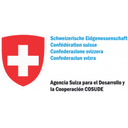Executive Secretary

10th International Scientific Conference on Agricultural Development and SustainabilityAGROCENTRO 2023
Agrocentro 2021
Abstract
This work aims to evaluate the effects of silvopastoral systems with the inclusion of Alnus acuminata H.B.K (Aliso) and Acacia melanoxylon R.Br. (Acacia), in association with base grass; on the body condition and reproductive behavior of dairy agroecosystems in the Andean region of Ecuador. Three agroecosystems (AES) were implemented, AES 1 (Acacia), AES 2 (Aliso) and AES 3 (control); 10 Holstein cows between 3 and 4 years old were used in each one, with a body condition at calving between 3.0 and 4.0. Body weight, body condition and reproductive indicators were compared using a simple analysis of variance (ANOVA), applying Duncan's test (1955) to compare the means. There were only significant differences (p <0.05) in the live weight of the cows at the 15-month study period. The body condition of the cows differed between agroecosystems from the ninth month after the start of the study, being higher in AES 1 and 2 with respect to the control. The delivery-first service interval differed (p <0.05) and was lower in AES 1 and 2. The delivery-conception and delivery-delivery intervals were lower (p <0.05) in AES 1 with respect to AES 3 and in AES 2 with respect to the previous two. It is concluded that the SSP, from the ninth month of implementation, benefited the body condition of the cows, those that had better calving-conception and calving-calving intervals were lower; the most positive impact on all indicators was AES 2.
Resumen
El objetivo de este trabajo fue evaluar los efectos de los sistemas silvopastoriles con la inclusión de Alnus acuminata H.B.K (Aliso) y Acacia melanoxylon R.Br. (Acacia), en asociación con el pasto base; en la condición corporal y el comportamiento reproductivo de los agroecosistemas lecheros de la región andina de Ecuador. Se implementaron tres agroecosistema (AES), el AES 1 (Acacia), el AES 2 (Aliso) y el AES 3 (control); en cada uno se utilizaron 10 vacas de la raza Holstein de tres a cuatro años de edad, con condición corporal al parto entre 3,0 y 4,0. El peso corporal, la condición corporal y los indicadores reproductivos se compararon mediante un análisis de varianza (ANOVA) simple, aplicándose la prueba de Duncan (1955) para comparar las medias. Solo existieron diferencias significativas (p<0,05) en el peso vivo de las vacas a los 15 meses de estudio. La condición corporal de las vacas difirió entre agroecosistemas a partir del noveno mes de iniciado el estudio, siendo superior en los AES 1 y 2 con respecto al testigo. El Intervalo parto-primer servicio difirió (p< 0,05) fue menor en los AES 1 y 2. Los intervalos parto-concepción y parto-parto fueron menores (p< 0,05) en el AES 1 con respecto al AES 3 y en el AES 2 con respecto a los dos anteriores. Se concluye que los SSP, a partir del noveno mes de implementados, beneficiaron la condición corporal de las vacas, las que tuvieron mejores intervalos parto-concepción y parto-parto fueron menores; el impacto más positivo en todos indicadores lo tuvo el AES 2.
About The Speaker

Dr. Luis Balarezo Urresta


